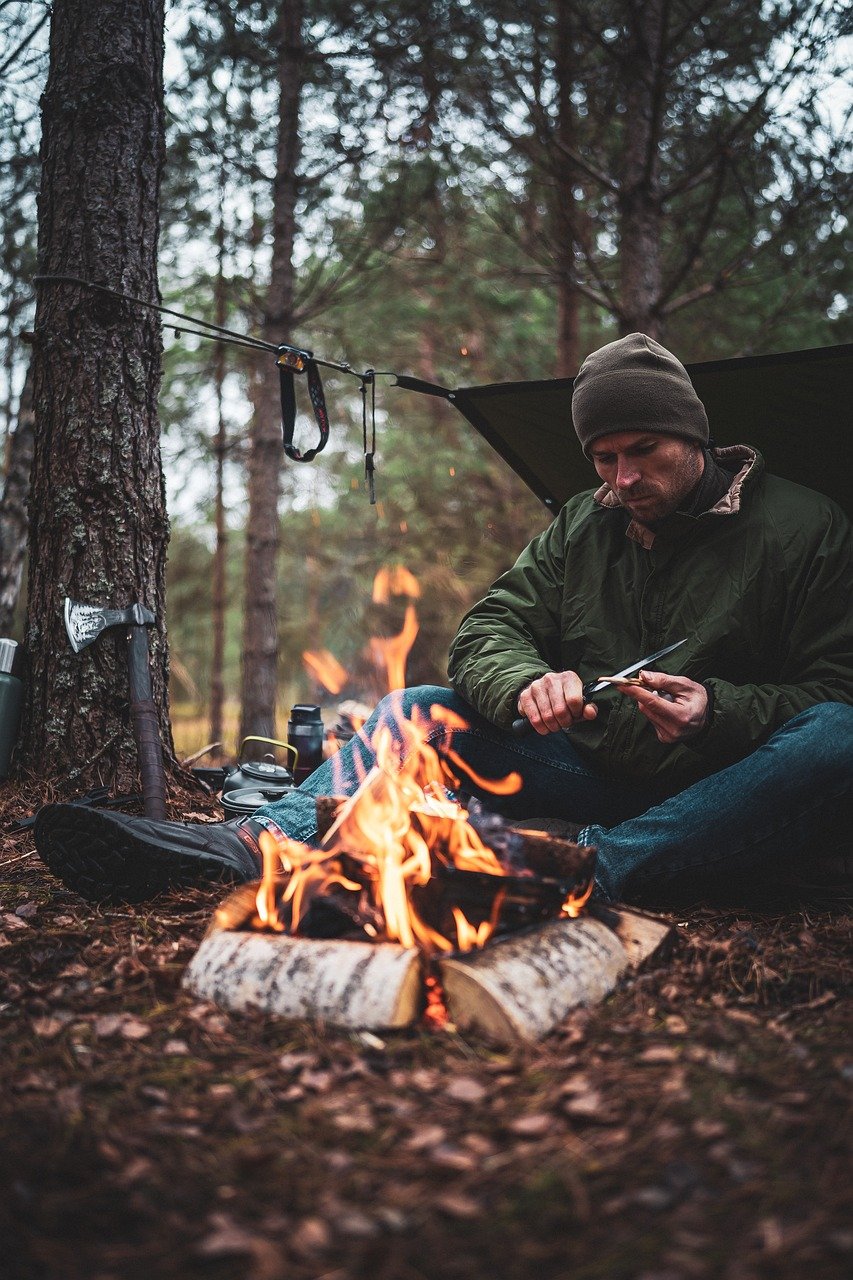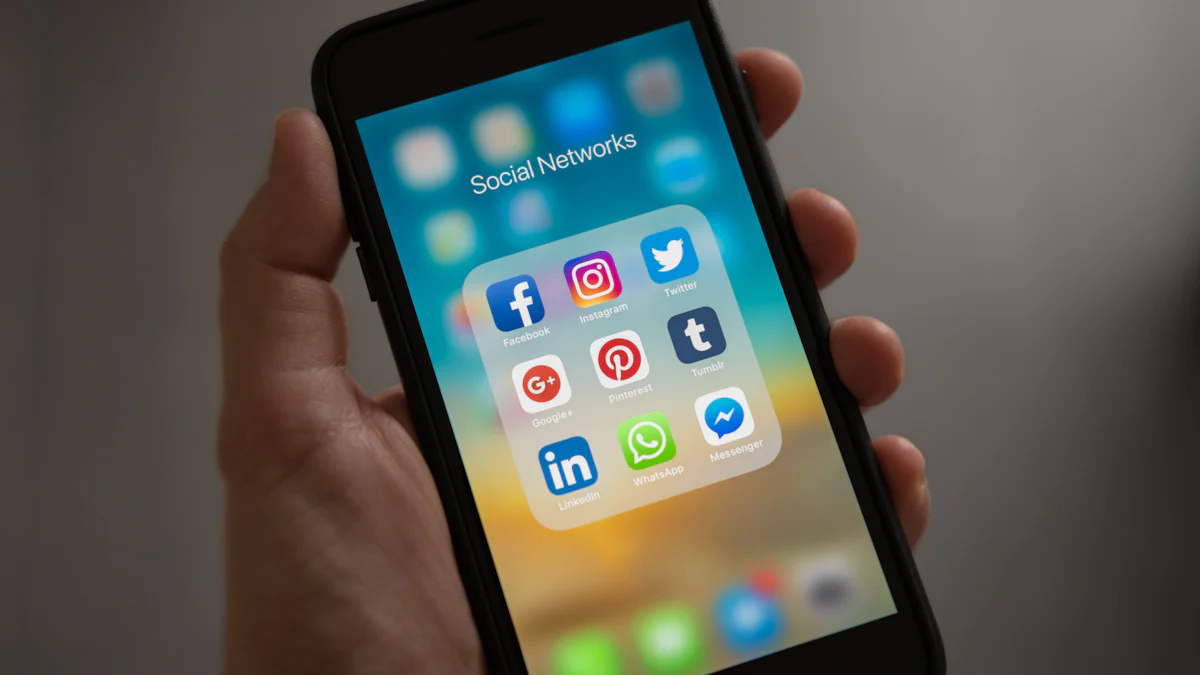Outdoor Gear Marketing: 6 Tips to Increase Your Reach

Effective marketing plays a crucial role in the outdoor gear industry. The market for outdoor equipment, including tents, backpacks, and hiking boots, reached USD 35 billion in 2023. Companies must adopt innovative strategies to stand out. Less than a third of outdoor equipment shoppers in the United States remain loyal to a particular brand. This blog aims to provide actionable tips to increase market reach. Outdoor gear marketing requires understanding the competitive landscape and leveraging unique approaches to capture consumer attention.
Understand Your Target Audience
Conduct Market Research
Effective outdoor gear marketing starts with understanding the target audience. Companies must conduct thorough market research to gain insights into potential customers.
Identify Demographics
Identifying demographics helps businesses understand who buys outdoor gear. Key demographic factors include age, gender, income level, and geographic location. For instance, younger consumers may prefer trendy and affordable gear, while older customers might seek high-quality and durable products. By pinpointing these details, companies can tailor their marketing efforts more effectively.
Analyze Buying Behavior
Analyzing buying behavior reveals how customers make purchasing decisions. Many consumers feel overwhelmed by the vast number of options available. In fact, 44% of consumers report feeling this way, with 38% finding the outdoor category particularly overwhelming. Understanding these behaviors allows businesses to simplify choices and provide clear guidance, making the shopping experience more enjoyable.
Segment Your Audience
Segmenting the audience enables companies to create targeted marketing strategies. This approach ensures that messages resonate with specific groups within the broader market.
Create Buyer Personas
Creating buyer personas involves developing detailed profiles of ideal customers. These personas include information about demographics, interests, and pain points. For example, a persona might represent a young professional who enjoys weekend hiking trips and values eco-friendly products. By crafting these profiles, businesses can better understand their customers' needs and preferences.
Tailor Marketing Messages
Tailoring marketing messages to different segments increases engagement and conversion rates. Personalized messages address the unique concerns and desires of each group. For instance, marketing campaigns targeting eco-conscious consumers should highlight sustainable practices and green products. This approach makes the marketing efforts more relevant and compelling.
Leverage Social Media

Choose the Right Platforms
Social media platforms offer unique opportunities for outdoor gear marketing. Selecting the right platforms ensures that marketing efforts reach the intended audience effectively.
Focus on Visual Platforms (Instagram, Pinterest)
Visual platforms like Instagram and Pinterest provide excellent avenues for showcasing outdoor gear. High-quality images and videos captivate potential customers. These platforms allow brands to highlight the beauty and functionality of their products. For example, Marmot uses stunning photo materials to promote its initiatives and the beauty of nature. This approach attracts users who appreciate visually appealing content.
Engage on Community Platforms (Facebook Groups, Reddit)
Community platforms such as Facebook Groups and Reddit foster engagement through discussions and shared interests. These platforms enable brands to connect with outdoor enthusiasts directly. Engaging in these communities builds trust and loyalty. For instance, REI’s #OptOutside initiative encouraged people to spend time outdoors. This movement reinforced the brand's commitment to outdoor activities and conservation. Participation in such initiatives enhances brand visibility and credibility.
Create Engaging Content
Creating engaging content is crucial for successful outdoor gear marketing. High-quality content captures attention and encourages interaction.
Use High-Quality Images and Videos
High-quality images and videos showcase products in action. These visuals demonstrate the gear's performance and appeal. For example, Jones Snowboards posted a mesmerizing Reel featuring a stunning vantage point and fresh powder. The Reel earned a 16.7% engagement rate and over 56K engagements. Fans expressed their jealousy and tagged friends to plan their next snowboarding adventure. Such content drives engagement and inspires potential customers.
Share User-Generated Content
User-generated content (UGC) adds authenticity to marketing efforts. Sharing UGC builds a sense of community and trust. Customers feel valued when brands feature their photos and experiences. This approach encourages others to share their own content. Brands can create campaigns inviting users to post their outdoor adventures using specific hashtags. This strategy not only generates content but also fosters a loyal customer base.
Optimize Your Website
Improve User Experience (UX)
A seamless user experience (UX) can significantly enhance outdoor gear marketing efforts. An optimized website ensures that visitors have a pleasant and efficient browsing experience.
Ensure Mobile Responsiveness
Mobile responsiveness is crucial for capturing mobile users. A responsive design adapts to various screen sizes, providing a consistent experience across devices. Exxel Outdoors saw a 272% increase in mobile conversion rate and a 193% increase in mobile revenue after re-platforming. These metrics highlight the importance of mobile optimization in outdoor gear marketing.
Simplify Navigation
Simplified navigation helps users find products quickly. Clear menus and intuitive layouts reduce frustration and improve satisfaction. Conseom achieved a 590% increase in unique visitors and a 275% increase in online sales after optimizing their website. Streamlined navigation plays a pivotal role in enhancing user experience and driving sales.
Implement SEO Best Practices
Search Engine Optimization (SEO) boosts visibility in search engine results. Implementing SEO best practices attracts more organic traffic to the website.
Use Relevant Keywords
Using relevant keywords improves search engine rankings. Keywords related to outdoor gear marketing should appear naturally in content. This strategy increases the chances of appearing in search results when potential customers look for outdoor gear. For instance, including terms like "hiking boots" or "camping tents"," camping light" in product descriptions can attract targeted traffic.
Optimize Product Descriptions
Optimized product descriptions provide detailed information about items. High-quality descriptions include features, benefits, and specifications. SiteSpect's recommendations outperformed existing product recommendations by 5.8%, resulting in over $117K net proceeds. Well-crafted descriptions not only improve SEO but also enhance the shopping experience by providing valuable insights.
Utilize Influencer Marketing

Identify Relevant Influencers
Influencer marketing can significantly boost outdoor gear brand visibility. Identifying the right influencers ensures authentic and effective promotion.
Look for Authentic Engagement
Authentic engagement matters more than follower count. Influencers with genuine interactions build trust with their audience. Brands should seek influencers who actively respond to comments and messages. For example, an influencer who shares personal outdoor experiences and engages with followers creates a loyal community. This authenticity translates into higher credibility for the brand.
Check Audience Alignment
Audience alignment is crucial for successful influencer partnerships. Brands must ensure that the influencer's followers match the target market. Outdoor gear companies should collaborate with influencers whose audience includes outdoor enthusiasts. For instance, partnering with a hiker or camper with a dedicated following ensures that promotional content reaches potential customers. This alignment increases the likelihood of conversions and brand loyalty.
Develop Partnerships
Developing strong partnerships with influencers enhances marketing efforts. Effective collaborations create mutually beneficial relationships.
Offer Product Samples
Offering product samples to influencers allows them to experience the gear firsthand. Influencers can provide honest reviews and showcase the products in real-life scenarios. For example, sending a new hiking backpack to an outdoor adventurer enables them to test and share their experience. This approach generates authentic content and builds trust among followers.
Collaborate on Content
Collaborating on content with influencers creates engaging and unique promotional material. Brands can work with influencers to produce videos, blog posts, or social media campaigns. For instance, co-creating a video series on outdoor survival tips featuring the brand's gear can captivate viewers. This collaboration not only showcases the products but also provides valuable content to the audience.
Case Studies:
Patagonia: Patagonia's collaboration with athletes has built one of the most advanced influencer programs in the lifestyle sector. Athletes frequently mention their partners, showcasing high brand loyalty.
REI: REI's influencer campaigns often involve outdoor enthusiasts who share their adventures using REI gear. These authentic stories resonate with the audience and drive engagement.
Influencer marketing offers a powerful way to connect with potential customers. By identifying relevant influencers and developing strong partnerships, outdoor gear brands can enhance their reach and impact.
Offer Promotions and Discounts
Create Limited-Time Offers
Limited-time offers create urgency and drive immediate action. Outdoor gear brands can leverage this strategy to boost sales and attract new customers.
Use Seasonal Sales
Seasonal sales align promotions with specific times of the year. For example, offering discounts on winter gear during the fall encourages early purchases. Brands can also promote summer equipment in the spring. Seasonal sales capitalize on the changing needs of outdoor enthusiasts.
Promote Flash Sales
Flash sales generate excitement and prompt quick decisions. These short-term promotions offer significant discounts for a limited period. Flash sales can be promoted through social media, email newsletters, and website banners. This strategy creates a sense of urgency and motivates customers to act fast.
Implement Loyalty Programs
Loyalty programs reward repeat customers and encourage long-term engagement. These programs build a loyal customer base and increase lifetime value.
Reward Repeat Customers
Rewarding repeat customers fosters brand loyalty. Brands can offer exclusive discounts, early access to new products, or special gifts. For instance, a loyalty program could provide points for every purchase, which can be redeemed for future discounts. This approach incentivizes repeat business and enhances customer satisfaction.
Offer Referral Bonuses
Referral bonuses encourage existing customers to bring in new ones. Brands can offer rewards for successful referrals, such as discounts or free products. For example, a customer who refers a friend could receive a discount on their next purchase. Referral programs leverage word-of-mouth marketing and expand the customer base.
Kate, a 2022 Hoka Global Ambassador, experienced significant benefits from a partnership with Hoka. She mentioned Hoka 46 times in September 2022 alone, showcasing the power of authentic promotion. This partnership not only boosted Hoka's brand love but also helped Kate launch her full-time creator career.
Measure and Analyze Performance
Track Key Metrics
Tracking key metrics is essential for effective outdoor gear marketing. Monitoring website traffic provides insights into visitor behavior. Analyzing conversion rates helps identify how many visitors become customers. These metrics reveal the effectiveness of marketing efforts.
Monitor Website Traffic
Website traffic monitoring involves tracking the number of visitors. Tools like Google Analytics offer detailed reports on user activity. High traffic indicates strong interest in outdoor gear marketing campaigns. Low traffic may signal the need for adjustments.
Analyze Conversion Rates
Conversion rates measure the percentage of visitors who make a purchase. A higher conversion rate suggests successful outdoor gear marketing strategies. Lower rates may indicate issues with the website or marketing messages. Regular analysis helps pinpoint areas for improvement.
Adjust Strategies Based on Data
Adjusting strategies based on data ensures continuous improvement. Identifying successful campaigns allows businesses to replicate effective tactics. Optimizing underperforming areas enhances overall marketing performance.
Identify Successful Campaigns
Successful campaigns often share common traits. High engagement, increased sales, and positive feedback are key indicators. Businesses should analyze these elements to understand what works. Replicating these strategies can boost future outdoor gear marketing efforts.
Optimize Underperforming Areas
Underperforming areas require careful attention. Data analysis helps identify weak points in marketing strategies. Adjustments may include refining messages, improving visuals, or targeting different demographics. Continuous optimization leads to better results over time.
Pro Tip: Benchmarking social media performance against competitors helps understand industry success benchmarks. This practice reveals what works in the industry and measures success relative to competitors.
Effective outdoor gear marketing relies on measuring and analyzing performance. Tracking key metrics and adjusting strategies based on data drives business growth. Continuous improvement ensures that marketing efforts remain relevant and impactful.
Outdoor gear marketing demands a strategic approach. Understanding the target audience and leveraging social media platforms can significantly enhance reach. Optimizing websites and utilizing influencer marketing can drive engagement and conversions. Offering promotions and discounts attracts new customers and fosters loyalty. Measuring and analyzing performance ensures continuous improvement. Companies must adapt and refine strategies based on data insights.
Implement these tips and monitor results to see growth in outdoor gear marketing efforts. Share experiences or ask questions to engage with the community and learn from others.
See Also
Improving Customer Satisfaction at Outdoor Gear Stores
Optimizing Revenue with Outdoor Gear Wholesale Tactics
Best Practices for Finding Camping Gear from Trusted Wholesalers
Future Plan: Launching Your Outdoor Gear Enterprise
Boosting Earnings: Successful Tactics for Camping Gear Wholesale
About US
Follow Us
Hello,Friend,
I am Mary from Helius, we are manufacturer of LED lighting products with more than a decade of experiences.
We offer hot selling products in market and guarantee the quality with competitive cost.
Let’s have more discussion on your inquiry.
Or you can reach out me via what’s up/tele gram +8618123952945 if it’s favorable to you.
Address
4th Floor, Building A16, Intelligent terminal industrial park of Silicon Valley, Dafu Industrial Zone,Guanlan, Shenzhen, 518110 China
Contacts
mary@heliuslights.com
heliuslight04@hotmail.com
+0086 18123952945
